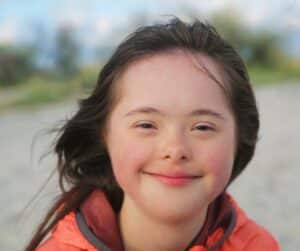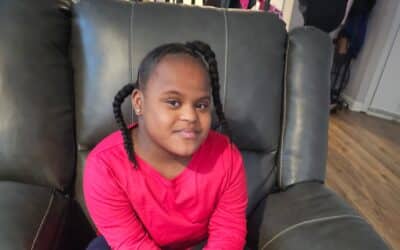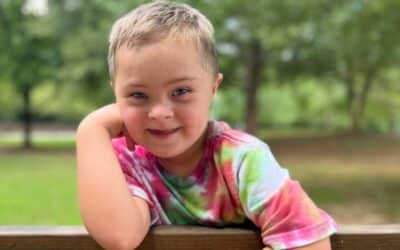One of the most miraculous aspects a child’s growth is their speech, language, and communication development journey. It is a journey that begins before they are even born, as they listen to the soothing sound of their mother’s heartbeat and voice. And it is a journey that continues throughout their lives, as they understand and use new words and discover new ways of expressing themselves. In this article we will discuss the lifelong journey of speech and language development.
We will explore the journey of neurotypical speech, language, and communication, from the earliest days of infancy to the heights of adulthood. By understanding the sequence of neurotypical development, we can understand the expected progression of speech and language development, recognize when intervention is needed, and if needed, gain guidance for an effective intervention process.
Infancy: Foundations of Communication
Receptive Language-Language Comprehension
In the earliest days of life, babies are already beginning to perceive and understand language. Even in the womb, they can distinguish between different sounds and rhythms of speech. After birth, they continue to develop their language skills through exposure to speech and language through interaction with their caregivers.

Expressive Language
At first, this may involve crying and simple cooing and babbling, as they begin to experiment with making sounds. As they grow, they start to imitate the sounds they hear, eventually developing their first words. Around the age of one-year, babies begin to say their first words. These are typically simple words like “mama” and “dada,” but these words mark a major milestone in their language development.
Social Language
Even in the earliest days, babies are communicating with their caregivers through social cues, such as eye contact, facial expressions, and body movements. As they grow, they use these cues more and more to gain attention and express their needs and desires.
Speech Sound Production
During the first months of life, babies are producing simple sounds, such as cooing and crying. As they grow, they begin to produce more complex vowel and babble using consonant sounds combinations and sequences, eventually developing their first words.

Toddlerhood: Rapid Language Growth
Receptive Language
Around the age of two, toddlers experience a rapid expansion in their language abilities. They begin to understand the rules of grammar and syntax and develop the ability to understand the nuances of language.
Expressive Language
During this stage, children’s brains are primed for language learning. They learn new words at a rapid pace and begin to form word combinations and sentences.
Social Language
Toddlers continue to develop their social communication skills, learning how to initiate and respond to their conversation partner, and to understand social cues such as turn taking, humor, and politeness.
Speech Sound Production
Toddlers continue to refine their speech sound production, becoming more accurate in their pronunciation of speech sounds, words, phrases and sentences. As their oral motor skills become more refined, they are able to produce more complex speech sounds and the clarity of their speech improves.
Childhood: Refining Language Skills

Receptive Language
As children enter school, their language skills continue to refine and expand. They develop the ability to understand more complex vocabulary and sentences.
Expressive Language
Children learn to use language to express themselves more clearly, convey information, and interact with others. They also develop their ability to understand and use language through reading and writing.
Social Language
As children enter school, they learn to navigate social situations with greater ease. They develop the ability to listen actively, ask questions, engage in conversations, and convey their own thoughts and feelings effectively.
Speech Sound Production
Children continue to improve their speech sound production, becoming more accurate in their pronunciation and able to use more complex words in sentences and conversation.

Adolescence: Developing a Personal Voice
Receptive Language
Adolescents continue to increase their understanding of language, developing a more advanced and specific understanding of syntax, vocabulary, and communication styles.
Expressive Language
Adolescents begin to develop a more personal voice, expressing their thoughts and feelings with greater depth and complexity.
Social Language
Adolescents learn to navigate the subtleties of social communication, such as sarcasm, irony, and humor.
Speech Sound Production
Adolescents have mastered speech sound production in their primary language, becoming more confident and precise in their communication.
Adulthood: Mastery of Communication

Receptive Language in Adulthood
Adults experience enhanced understanding of complex vocabulary and syntax, leading to a deeper comprehension of language nuances, idiomatic expressions, and cultural references. This development aids in better interpreting diverse dialects, accents, and complex written and spoken information.
Expressive Language in Adulthood
Adults refine their expressive language skills, developing a unique voice and becoming more adept at clearly articulating complex ideas. They improve in adapting their speech for different audiences and contexts, enhancing their ability to influence and engage effectively.
Social Language in Adulthood
Adults gain a more nuanced understanding of social communication, becoming more skilled at interpreting social cues and nonverbal signals. They learn to navigate various social scenarios and adapt to different communication styles, improving their ability to build meaningful relationships in a variety of settings.
Examples of Speech, Language and Communication
To help explain speech and language development, let us look at some clear examples for each category:
Receptive Language
- Infancy: Distinguishing between different sounds and rhythms of speech
- Toddlerhood: Understanding vocabulary and the rules of grammar and syntax
- Childhood: Developing the ability to understand more complex vocabulary and syntax
- Adolescence: Developing a more nuanced understanding of syntax, vocabulary, and communication styles
- Adulthood: Becoming more adept at processing complex vocabulary and syntax
Expressive Language
- Infancy: Crying and simple cooing and babbling
- Toddlerhood: Using more and more words, phrases, and sentences
- Childhood: Using language to express themselves, convey information, and understand others
- Adolescence: Developing a more personal voice and expressing thoughts and feelings with greater depth and complexity
- Adulthood: Refining and expanding the ability to express oneself effectively
Social Language
- Infancy: Communicating through social cues such as eye contact, facial expressions, and body movements.
- Toddlerhood: Developing the ability to initiate and maintain conversations and understand social cues such as humor and politeness
- Childhood: Navigating social situations with greater ease and conveying their increasingly abstract and unique thoughts and feelings effectively
- Adolescence: Navigating the subtleties of social communication such as sarcasm, irony, and humor
- Adulthood: Developing a deeper understanding of social communication and becoming adept at navigating complex social situations
Speech Sound Production
- Infancy: Producing simple sounds such as crying, cooing, and babbling
- Toddlerhood: Refining speech sound production and becoming more accurate in pronunciation
- Childhood: Continuing to improve speech sound production and becoming able to produce more complex speech sounds
- Adolescence-Adulthood: Becoming more confident and precise in speech nuances and ability to produce complex words.
FAQ
Q: What should I do if I’m concerned about my two-year-old son’s speech and language development?
A: Talk to your child’s pediatrician, contact your local Early Intervention program, and/or consult with a speech-language pathologist if you have concerns about your son’s speech and language development.
Q: Is it normal for children to have different rates of speech and language development?
A: Yes, every child develops at their own pace, and there is a wide range of what is considered normal. However, if you have concerns about your child’s development, it’s important to talk to their pediatrician and a speech-language pathologist.
Q: Can I do anything to support my child’s speech and language development at home?
A: Absolutely! Simple activities such as modeling language throughout daily routines, reading books together, singing songs, engaging in conversation, and consistently responding to your child’s communication efforts in a positive manner can all support their speech and language development. It’s also important to provide a language-rich environment, with plenty of exposure to speech and language, and interaction with caregivers.
Q: Is it ever too late for my child to improve speech and language skills?
A: No, it’s never too late to improve speech and language skills. Improving our understanding and use of language, increasing speech clarity, learning a second language, introducing or expanding the use of AAC, and refining communication skills for the workplace and social settings are just a few examples of ways that we can continue to grow and develop our speech and language abilities throughout our lives.
Additional Resources
- Typical Speech and Language Development (asha.org)
- Speech and Language Developmental Milestones | NIDCD (nih.gov)
- American Speech-Language-Hearing Association (ASHA)
- Age-Appropriate Speech and Language Milestones (stanfordchildrens.org)
- Help your Baby’s Communication Development | Free Resources (pathways.org)
- The Hanen Centre
- Zero to Three Zero to Three
- Resources – Baby Navigator
- Language development in children with Down syndrome – Reasons for optimism (down-syndrome.org)
- Speech, Language, and Communication Milestones for Teens (expressable.com)
- Autism (Autism Spectrum Disorder) (asha.org)
Summary/Conclusion
The journey of speech, language, and communication is a remarkable one, filled with countless milestones and opportunities for growth. As parents, we have the privilege of supporting our children every step of the way, from their earliest coos and babbles to the heights of professional communication. Let us embrace this journey with joy and wonder, celebrating every new milestone and cherishing the precious gift of human communication. And remember that this journey is not just for children. It is a journey that continues throughout our lives, offering endless opportunities for learning, growth, and connection.




0 Comments